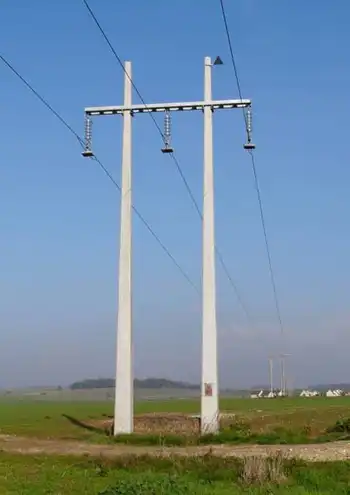Pollution rules will create jobs: study
TENNESSEE - Proposed rules governing air pollution generated by the nation's power providers could cost the industry nearly $200 billion in upgrades and new, cleaner generation but provide four to eight times that amount in economic benefits, with Tennessee being one of the big winners, according to a recent study.
Utilities, including TVA, are bracing for the new regulations, set to be released later this year by the Environmental Protection Agency. They include what's known as the Clean Air Transport Rule, aimed at reducing sulfur dioxide and nitrogen oxide emissions in 31 states, and a new rule known as Utility MACT — for maximum achievable control technology — to limit hazardous air pollutants including mercury, arsenic, lead and hydrochloric acid associated with coal-burning plants.
What may simply look like an added expense for utilities to shoulder actually should be an economic boon, says James Heintz, associate research professor at the University of Massachusetts' Political Economy Research Institute and co-author of "Green Recovery - A Program to Create Good Jobs and Start Building a Low-Carbon Economy."
The expected investment should generate 1.46 million U.S. jobs by 2015, when the new regulations should have their biggest impact.
More than 113,000 of those jobs would be in Tennessee, according to the report, resulting from an expected $3.6 billion investment in pollution controls and a $9.9 billion invested in new power production capacity over the five-year period.
Tennessee stands to gain, in large part, because TVA has historically relied on coal to produce much of its electricity.
"I think where we get these results from is just the fact that Tennessee may not have made as many investments as other states over time," Heintz says. "You have more projected investments without a huge withdrawal in capacity. I think that's where you get the big net impact."
TVA has spent $5.5 billion on pollution controls and will spend another $3.8 billion by 2018, TVA spokesman Mike Bradley wrote in an e-mail response to questions about the study.
Last year, TVA announced it would shutter coal-burning plants at three sites in Tennessee, Kentucky and Alabama, reducing its coal-derived power generation by one-third.
TVA also is planning large investments in new, cleaner power production.
The agency is building a natural gas-powered unit in Rogersville, Tenn., and its focused on rebuilding its nuclear power program to meet growing demand in its eight-state territory.
"TVA's renewed vision is to be one of the nation's leading providers of low-cost, reliable and cleaner energy by 2020," Bradley said. "More specifically, TVA intends to be the nation's leader in improving air quality and increased nuclear production and the Southeast's leader in increased energy efficiency."
Most of the new jobs cited in Heintz's study are related to construction and engineering work involved in installing new technologies to reduce plant emissions. About 1,400 permanent jobs should result from operation and maintenance of new plants, exceeding the 870 operation and maintenance jobs lost with the retirement of older facilities.
While many of the new jobs will be temporary, the report represents a snapshot in time, Heintz says, and he expects work related to cleaner power production to continue well into the decade.
"Yeah, they're temporary in terms of the five-year time period," he says, but the new rules are "going to create demand for these types of activities and these types of jobs much farther into the future."
How the utility industry's investment will impact electricity rates still is an open question.
Since amendments to the Clean Air Act were passed in 1990, utility rates have remained essentially flat in spite of "hundreds of billions of dollars" spent to reduce emissions, according to the report.
Ratepayers might not get so lucky this time, Heintz says, adding current forecasts indicate a 5 percent to 6 percent increase attributable to the new regulations.
"In many respects these investments are modernizing the capital equipment and might make them more efficient in the utility sector," he says. "Is it going to be a gigantic jump-up in prices? It doesn't look like that."
Tennessee should also benefit from better air quality as a result of the new regulations, and that should lead to reduced health care costs, according to the report.
"These aren't pollutants where it's kind of questionable whether they have a negative impact," Heintz says. "It's pretty well documented that they do."
As President Barack Obama's administration tussles with the courts and Congress over greenhouse gas reductions, the more near-term air pollution controls will push the industry in a greener direction.
In addition to pollution controls for existing plants, "The new capacity that's being activated will be more advanced — cleaner burning coal, switching to natural gas or various forms of renewable energy," Heintz says. "It's more modern technologies that are all cleaner than existing technologies."
Related News

Here are 3 ways to find out where your electricity comes from
NEW YORK - There are few resources more important than energy. Sure, you may die if you don't eat for days. But your phone will die if you go too long without charging it. Energy feeds tech, the internet, city infrastructure, refrigerators, lights. You get the idea. Yet unlike our other common needs, such as food, energy sources aren't exactly front of mind for most people.
"I think a lot of people don't put a lot of bandwidth into thinking about this part of their lives," said Richard McMahon, the SVP of energy supply and finance at Edison Electric Institute, a…




